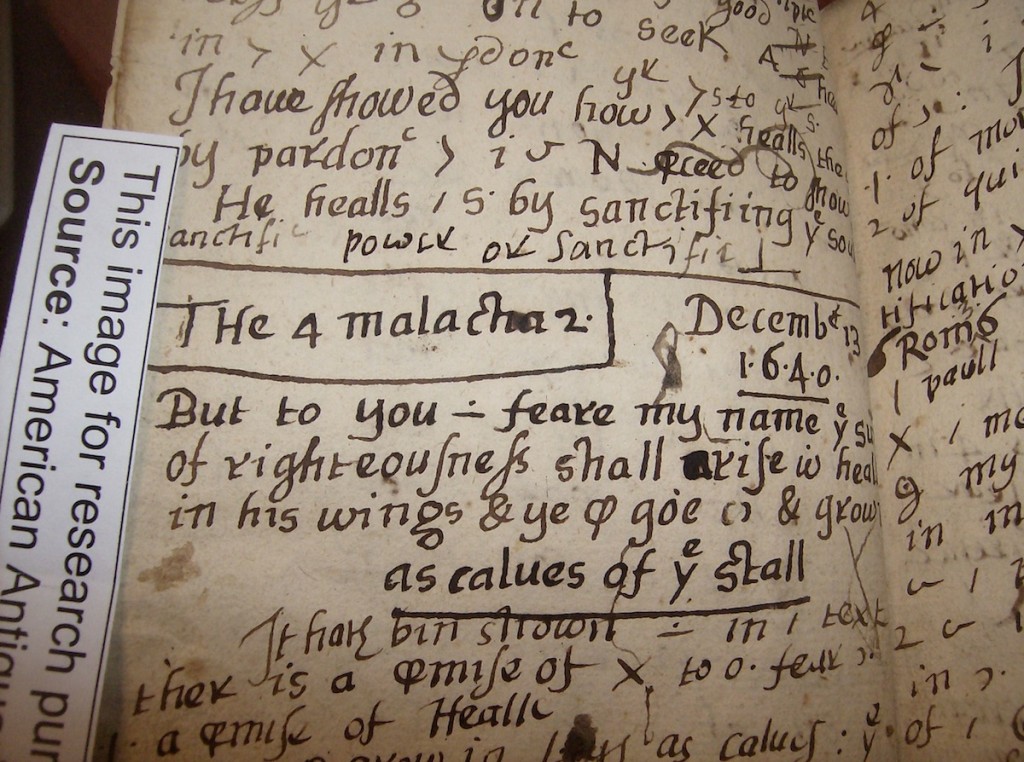When I sent the my book off for publication, there was some uncertainty about who exactly this notetaker was. The catalog record at the American Antiquarian Society reads “[Pinch/Pyncheon?, John]. sermon notes; possibly those of John Pinch (1625-??).” Only after the book was in press did I hear from David Powers, who has done the remarkable work of cracking John Pynchon’s shorthand for his work on the minister Georege Moxon. When I send him this image, he was able to confirm that the notetaker was indeed the same John Pynchon and that he was about 14 years old when he made these notes. (More on David Powers work in another post!)
Even if you forgive yourself the shorthand notebooks, learning to read early modern handwriting requires knowledge of common symbols and abbreviations. The character that looks like a circle with a vertical line through it stands for “pro” or “pre,” two very common prefixes (especially in heavily Latinate religious language, I suspect). In this case, you can tell from context that the word reads “promise” because the big X (or, more precisely, the Greek letter chi) stands for “Christ,” and “there is a promise of Christ” makes a lot more sense than “there is a premise of Christ.”
Deciphering sermon notes is difficult, not only because the letter forms are unfamiliar and there are many such shorthand, symbols, and abbreviations to learn, but because the writing is often done in haste, phrasing may be truncated, and the physical condition of the page may deteriorate.
Want to try your own hand at some transcriptions? Click on the the “Get Involved” link.
Courtesy of the American Antiquarian Society.

